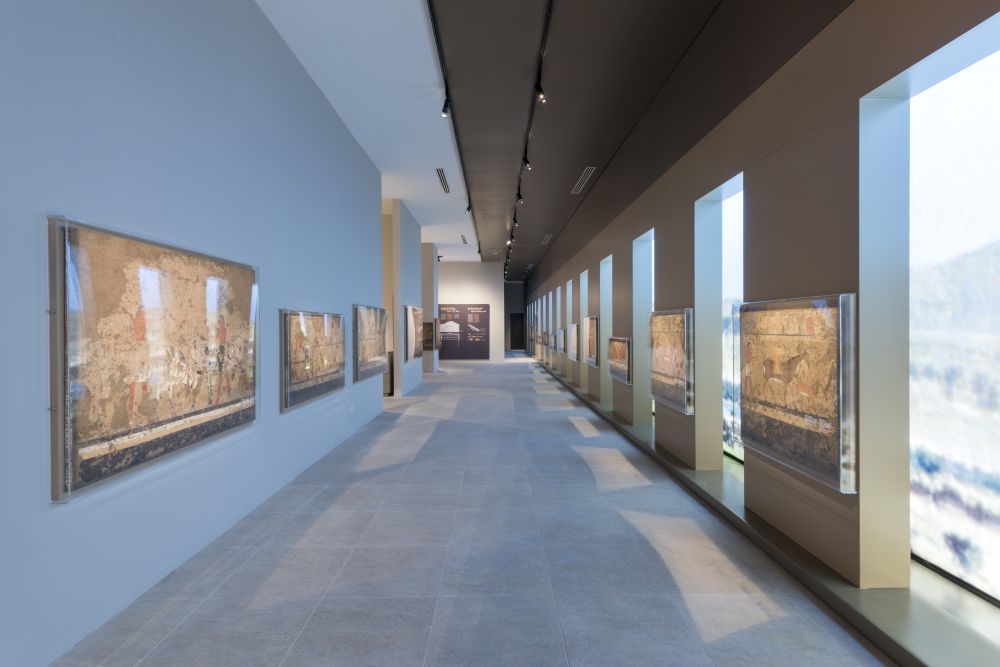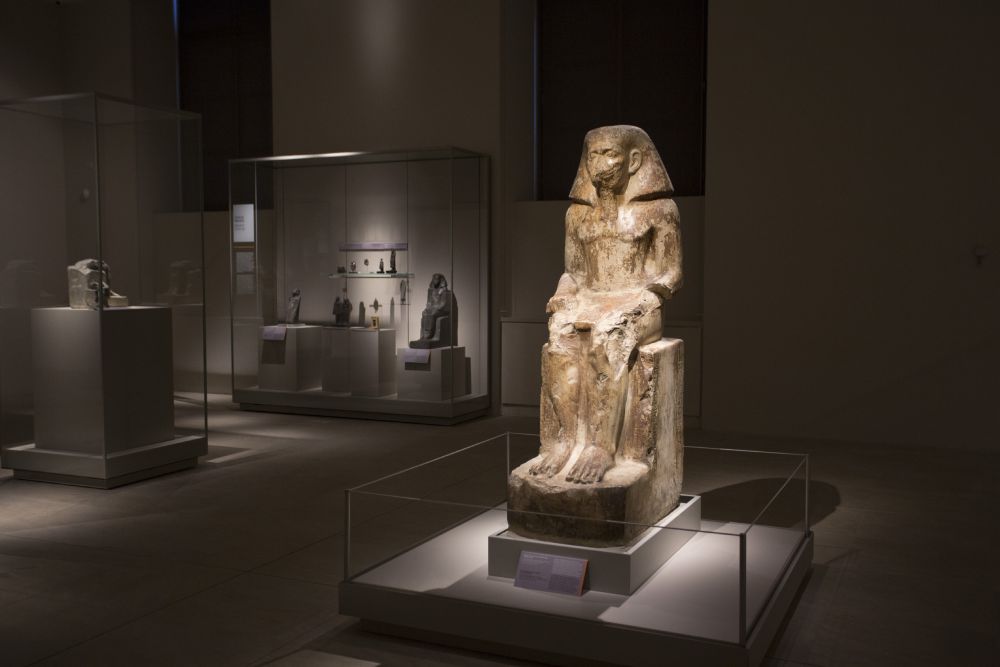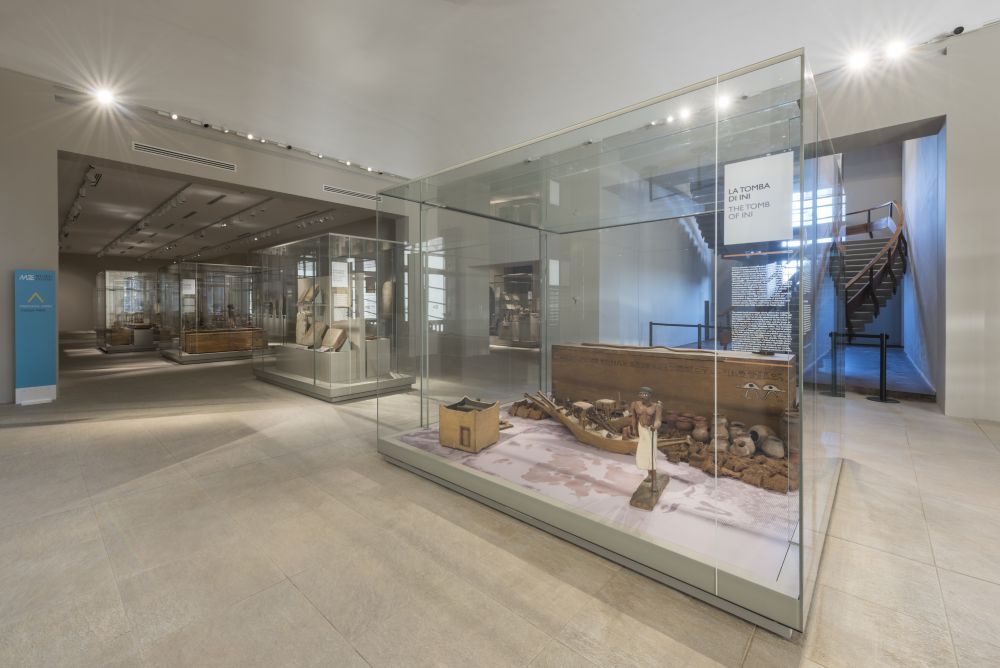The Egyptian Museum in Turin is the oldest museum dedicated to the culture of Ancient Egypt. It is the second largest museum in the world, with a collection that is second only to Cairo. The study of Egyptology has a historical connection to the city of Turin and the House of Savoy. The museum has undergone a complete renovation in recent years and now boasts a modern and attractive appearance.
Table of Contents
Turin’s gem: the Egyptian Museum and its treasures
Despite being a museum dedicated to an extinct civilisation, the Egyptian Museum conveys all the vitality of this ancient civilisation. The papyri on display recount tales of a workers’ strike in Deir el-Medina, plans for funerary architecture, and letters to distant relatives.
PLAN YOUR TRIP TO TURIN
Purchase the Torino + Piemonte Card online to enjoy free public transportation in Turin, as well as access to museums, castles, fortresses, and royal residences in Turin and the Piedmont region.
While travelling in Italy, you can stay connected with family and friends using the Holafly eSIM, which offers unlimited data at 3G, 4G, and LTE speeds. Additionally, be sure to get Heymondo travel insurance for a worry-free adventure.
The building housing the Egyptian Museum in Turin is also imbued with history. It is inside the Collegio dei Nobili, a Baroque building designed by Guarino Guarini. You can easily identify it by the massive Egyptian statues in front of the main entrance. In 2015, the museum’s interior was completely redesigned to create spacious and bright galleries.
Now, the interiors are truly spectacular. Every detail has been meticulously taken care of. That’s why the Egyptian Museum in Turin is one of the most famous museums in Italy. TripAdvisor awarded the museum with the Travellers’ Choice.
About the Egyptian Museum of Turin: from illegal excavations to Europe’s largest Egyptian collection
The story of the foundation of the Egyptian Museum in Turin is related to the first archaeological missions to Egypt. The first part of the exhibit tells about the first archaeologist-adventurers in the 19th-century Egypt.
The history of the Egyptian Museum begins with Bernardino Drovetti, the Consul General of France in Egypt in the early 19th century. Drovetti had a monopoly on excavations of Egyptian antiquities, which were fashionable then. He searched for them and resold the finds in Europe to museums and royal courts. In 1824, Charles Felix of Savoy bought a collection and decided to display it publicly.
You can learn more about the characters and events that led to the museum’s founding in the book La Storia del Museo Egizio (The History of the Egyptian Museum), available in Italian. Various important events took place to make the museum in Turin the oldest museum of Egyptian antiquities in the world. To bring historical order to the exhibits, sold in bulk by Bernardino Drovetti, the first director of the Egyptian Museum, Ernesto Schiaparelli, promoted excavations to study Egyptian culture in the field.
From 1900 to 1935, the Italian Archaeological Mission to Egypt searched for and excavated the tombs of the pharaohs. The Egyptian Museum in Turin contains many artefacts, including an entire temple and the tomb of Kha and Merit. Egypt and international archaeological missions at that time shared archaeological finds. It would no longer be possible today because all finds must remain in Egypt.
What to see at the Egyptian Museum in Turin: tombs, temples, statues
The Egyptian Museum in Turin owes its recent surge in popularity to director Christian Greco. He has modernised the museum and led the project to renovate the exhibition layout and itinerary. The museum boasts an extensive collection displayed in chronological order. It gives visitors insight into the lives of ancient Egyptians during the pre-dynastic and Middle Kingdom periods and how their civilisation evolved.
Contrary to popular belief, ancient Egypt was not a monolithic culture. The art of the time changed significantly over the centuries. There was also a significant shift during the reign of Amenhotep IV. His attempt to initiate a monotheistic religious revolution led to a visual change in art, resulting in a more realistic style.
Writing was wider than hieroglyphics. Many of the displayed papyri are in hieratic, a cursive form of hieroglyphics used for official documents of the pharaohs. The best way to discover these curiosities and fully appreciate the wonders of ancient Egypt is through a guided tour of the Egyptian Museum.
The Egyptian Museum in Turin is home to many objects, such as statues and grave goods. It is impossible to see everything in a single day. Even with a guide, visitors will discover something new each time they return to the museum.

The artists’ village of Deir el-Medina
During the New Kingdom period, the tombs of the pharaohs were moved to the Valley of the Kings, away from everything, to prevent them from being plundered. The artisans and architects who worked on the tombs lived in a nearby village, Deir el-Medina, so-called ‘the village of artists’ because it was home to many painters and sculptors.
The importance of the village of Deir el-Medina lies in the discovery of objects and evidence of everyday use. In this section of the Egyptian Museum of Turin are two very peculiar papyri. One describes a workers’ strike over late payment, while the other is a plan for a tomb used by construction workers.
The Tomb of Kha and Merit
Near the village of Deir El-Medina, the tomb of Kha and Merit, a tomb architect and his wife, was found in 1906. It was a sensational discovery at the time because grave robbers had not plundered it. The reason for such good fortune was due to a landslide. For centuries, access to the shaft leading to the tombs had remained covered, leaving only the burial chapel visible.
All the objects inside the Kha and Merit’s tomb are on display in the Egyptian Museum of Turin. The precious gold-covered book La Tomba di Kha e Merit (The Tomb of Kha and Merit), in Italian, anticipate what you will find in this room. Or help you learn more about the value of these unique artefacts once you return home.
Visiting the room dedicated to Kha and Merit is, in fact, an exciting plunge into the past. Here, you can see all the objects they used in their life: clothes, accessories, work tools, board games and even food!
The Gallery of Sarcophagi
In Ancient Egypt, sarcophagi were the equivalent of our contemporary coffins. Created to hold the bodies of the deceased, over time, they became increasingly ornate and complex, with outer and intermediate sarcophagi. All sarcophagi bear a representation of the deceased and are almost all gilded because they represent them as gods, the form they would take in the afterlife.
In the Gallery of Sarcophagi of the Egyptian Museum of Turin, you can discover how the style of Egyptian coffins has changed over time. You will find rich decorations, with gold in profusion. There is even a sarcophagus with a different style. The deceased Tamutmutef is depicted alive with a tunic instead of in the classic ‘dead pose’ of the more classical sarcophagi.
The Valley of the Queens
The wives of the pharaohs and important members of the court of the New Kingdom were buried not far from the Valley of the Kings, in the Valley of the Queens. In this area, scholars from the Italian Archaeological Mission to Egypt of the Egyptian Museum in Turin discovered the tomb of Nefertari, the wife of Ramesses II, in 1904. Unfortunately, the tomb had been almost wholly ransacked. You can only see a model of the tomb and the few objects left behind by the thieves, such as sandals made of woven plant fibres.
The Temple of Ellesiya
At the Egyptian Museum in Turin, you can also see an entire temple that stood along the banks of the Nile, dismantled and reconstructed piece by piece. The construction of Nasser’s dam, in fact, submerged the Temple of Ellesiya. The Egyptian Museum received it as a reward for helping to save it and other monuments, including the famous moving of the temple of Abu Simbel.
The Temple of Ellesiya is small but impressive and carved entirely out of rock in a T shape. You can actually walk into it and feel like an ancient Egyptian. On the far side, you can see Horus and Satet, the deities to whom the temple is dedicated, and Pharaoh Tutmosi III.
The Statuary in the Egyptian Museum
The most scenic part of the Egyptian Museum in Turin is certainly the Statuary, known even to those who are not museum-goers. The setting is fascinating, with lights to enhance the statues’ grandeur. In the last room of the museum, you can walk through some 20 statues of the fearsome warrior goddess Sekhmet, with the body of a woman and the head of a lioness. They come all from the same temple.

Helpful tips and practical information to plan your visit to the Egyptian Museum in Turin
The Egyptian Museum in Turin is one of my favourite museums, and I highly recommend it to everyone. This museum is one of the most beautiful and best-organised museums I have ever visited, and with each new visit, it gains charm.
The Egyptian Museum is full of objects that may have an almost incomprehensible meaning to non-experts, such as the ‘pillows’ of the ancient Egyptians. For the best experience, take a guided tour, at least for the first time, when you visit this museum. It will change the way you see Ancient Egypt.
Alternatively, you can read the guidebook Guida Museo Egizio di Torino at home for more in-depth information. As for me, I love museum guides and use them to prepare for my visits and check my notes for my blog posts when I get home.
Furthermore, the Egyptian Museum in Turin is a museum to return to regularly. The behind-the-scenes work of the Egyptologists contributes to updating the exhibition every year with translations of papyri and temporary exhibitions.
When planning your visit, please note that backpacks are not allowed in the museum rooms, and you must leave them in the cloakroom.
The Egyptian Museum in Turin with children
The Egyptian Museum is probably not the first museum in Turin that you would associate with a visit with children. However, if you are travelling with your children, you will be amazed at their interest in Ancient Egypt. Despite the content, the museum is quite kid-friendly. For example, children receive a cute mummy cat sticker at the entrance.
Based on my experience, the youngest are curious about boats and mummies. On the other hand, older children who have started studying Ancient Egypt at school will enjoy seeing live objects and papyri they have talked about in class.
With my son, we always planned our visits with the help of the guidebook Alla scoperta del Museo egizio. I segreti della terra dei faraoni (Discovering the Egyptian Museum. The Secrets of the Land of the Pharaohs). I also recommend taking part in a guided tour for children and families, a unique experience for little Egyptologists.

Tickets for the Egyptian Museum Turin
The Egyptian Museum in Turin has the following opening hours: Mondays from 9 am to 2 pm and Tuesdays to Sundays from 9 am to 6.30 pm. It is often crowded because it is one of the most famous museums in Turin. You may find a long queue at the entrance, especially during free opening days and weekends. To avoid long waits, I therefore recommend buying tickets online in advance.
The cost of a full ticket is € 18. Children up to the age of 5 can enter free of charge, while the ticket for children aged 6 to 14 costs only € 1. The museum also offers other reductions for groups or families, so always check the available options if you choose a single entry. However, I recommend that you take a guided tour due to the complexity and size of the museum, especially if this is your first time and you don’t have the opportunity to return regularly.
How to get to the Egyptian Museum in Turin
The Egyptian Museum is located in the heart of Turin, just a short distance from many of the city’s main tourist attractions. The street where the museum is situated is a pedestrian zone, so public transport doesn’t stop directly in front of the museum. However, this provides an excellent opportunity for a leisurely walk and to appreciate the scenic architecture of Turin.
To get to the museum, you have a few options. You can take the metro, get off at the Porta Nuova stop, and walk for about ten minutes. Alternatively, you can walk directly or use the bus after checking the best route on Google Maps. It’s important to note that driving to the museum is not recommended, as the entire centre of Turin is a restricted traffic zone. Still, there are pay car parks nearby.
Museo Egizio
Via Accademia delle Scienze, 6
10123 Torino
Where to sleep in Turin
In Turin you can sleep either in elegant hotels located in historical buildings or in modern flats with all comforts, the choice depends only on your taste. Since I live in Turin I can recommend the best hotels, which are the Best Western Plus Executive Hotel and Suites and the luxurious Hotel Principi di Piemonte, both in the city centre. If you are looking for a cheaper option, in modern hostels that also have private rooms, then Combo or CX Belfiore are for you, both located in vibrant neighbourhoods full of restaurants and nightlife.
Feel free to comment if you know the Egyptian Museum of Turin, when you visited it and what impressed you most. Sharing your experience can provide valuable information and inspire other visitors to discover this incredible museum in Turin.
